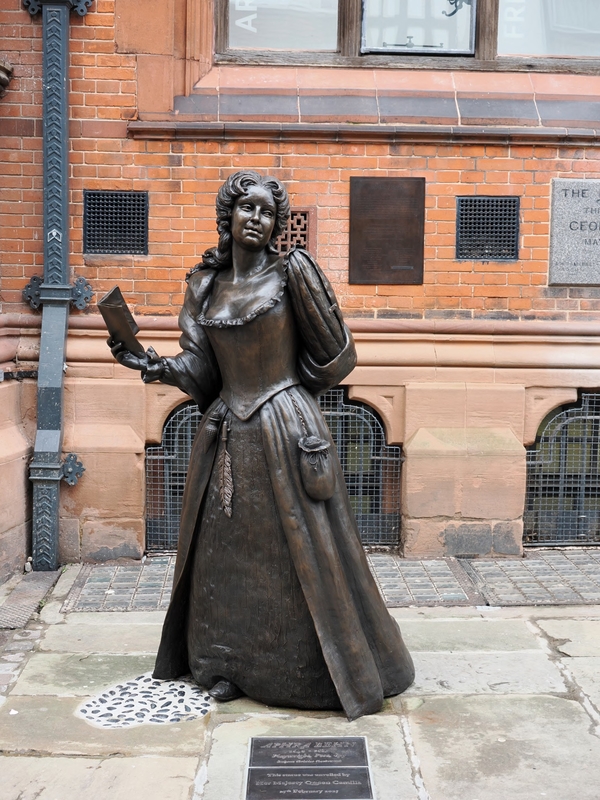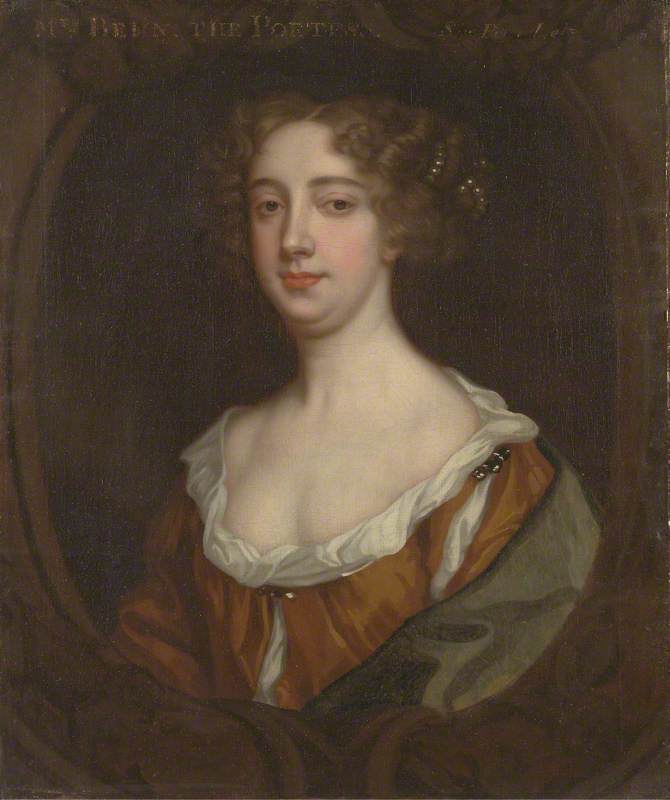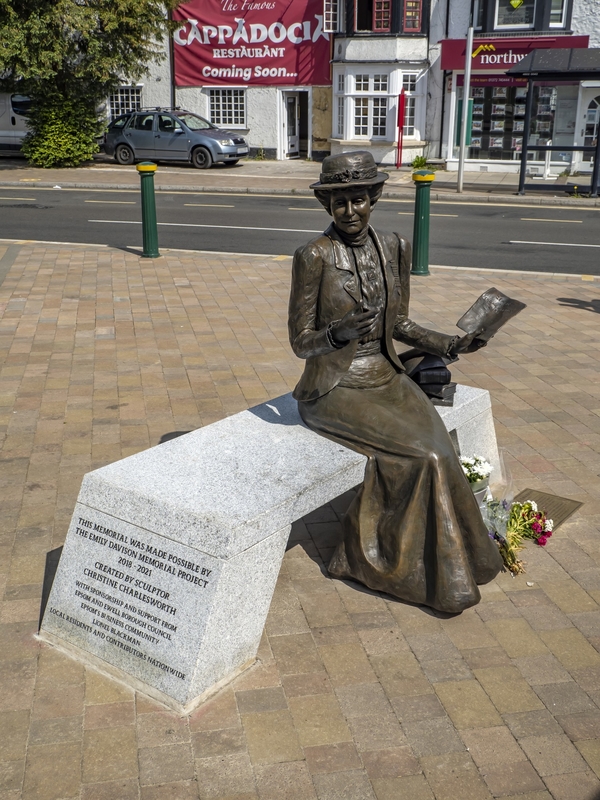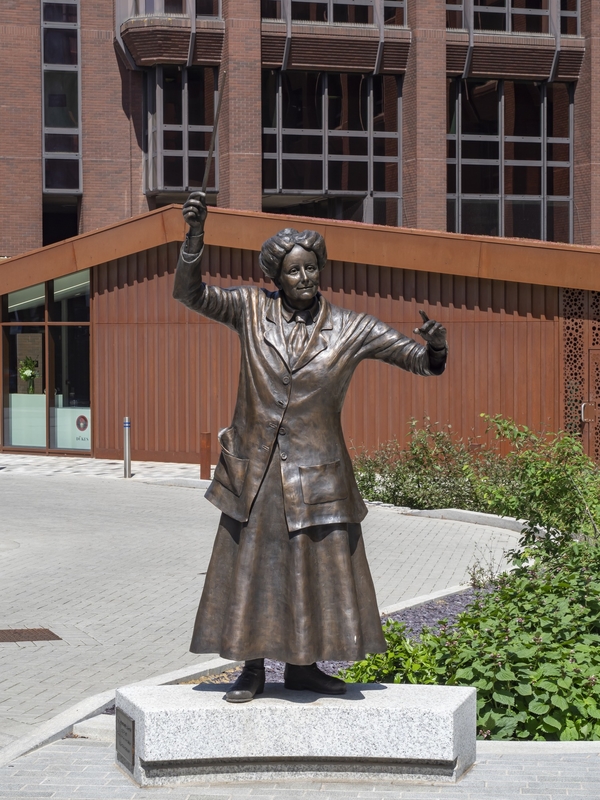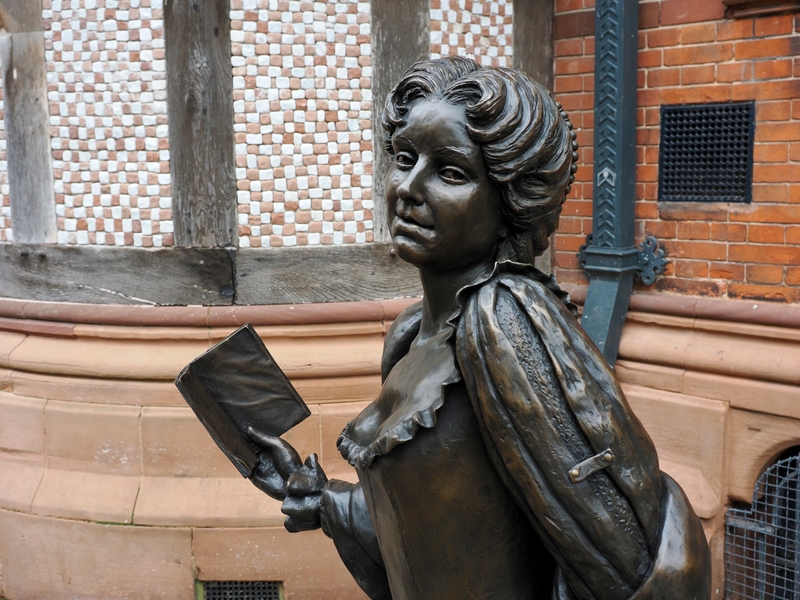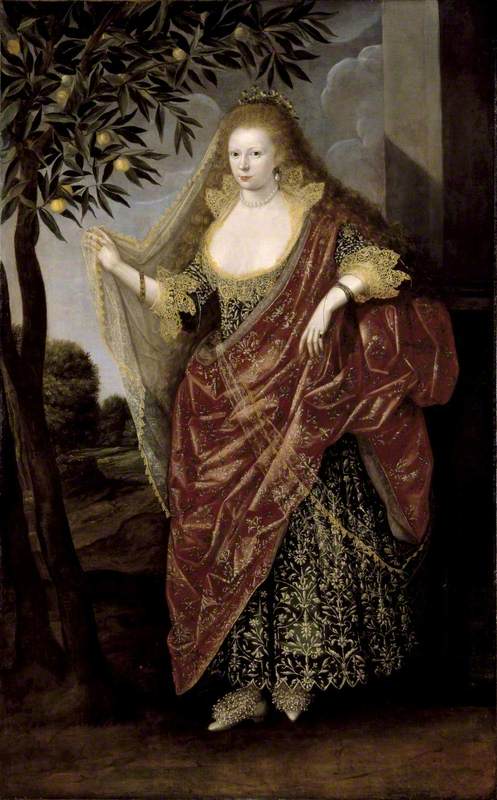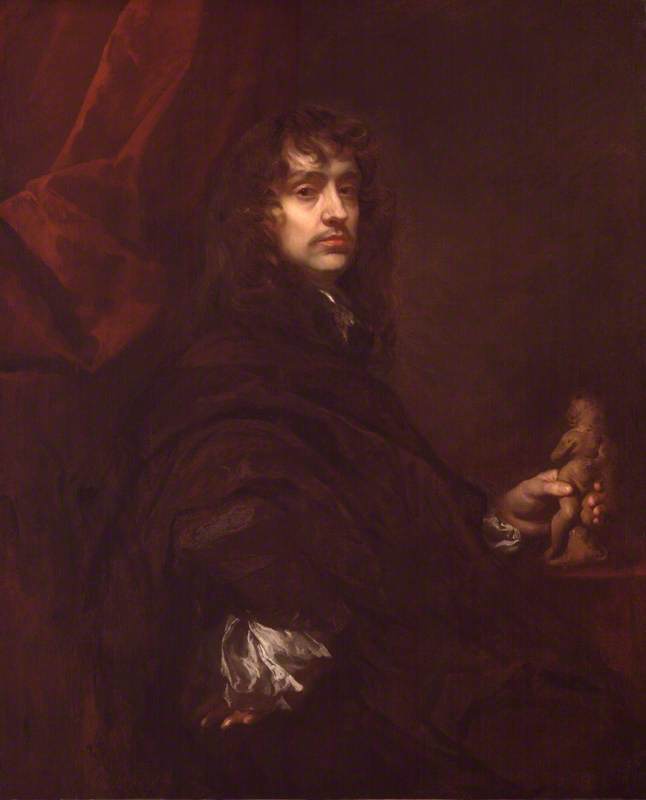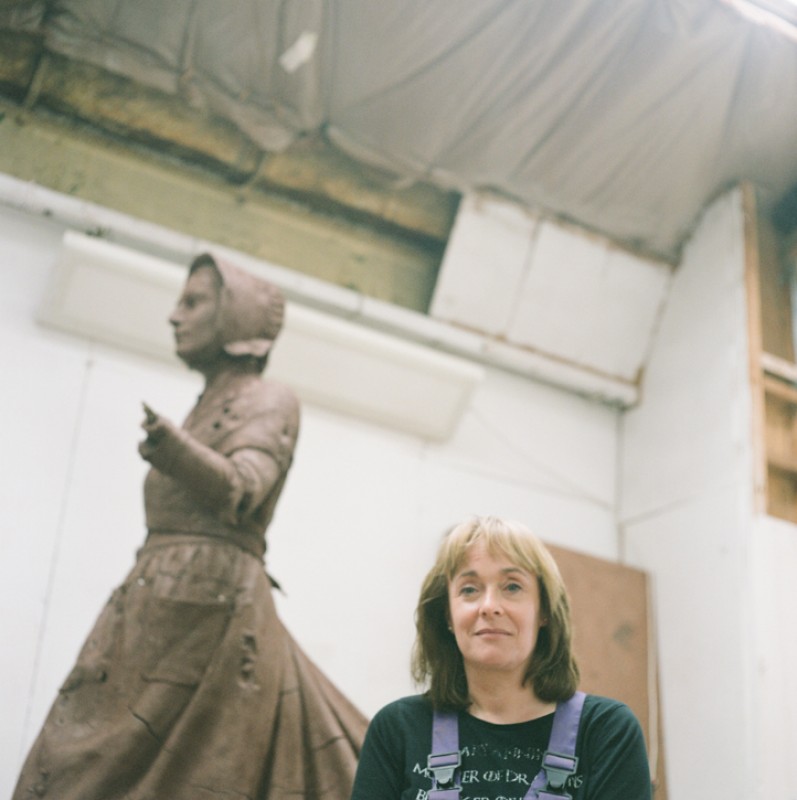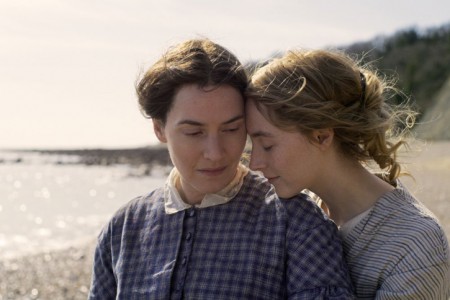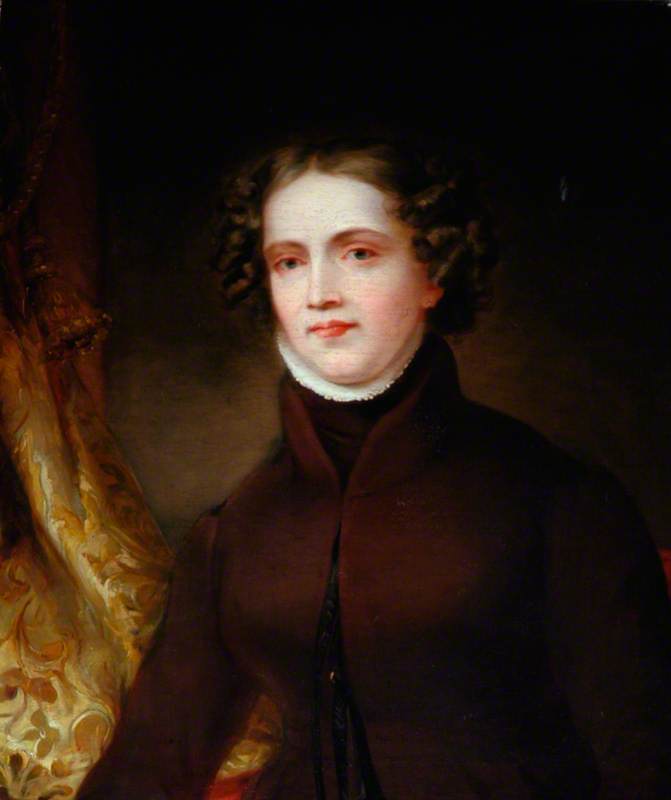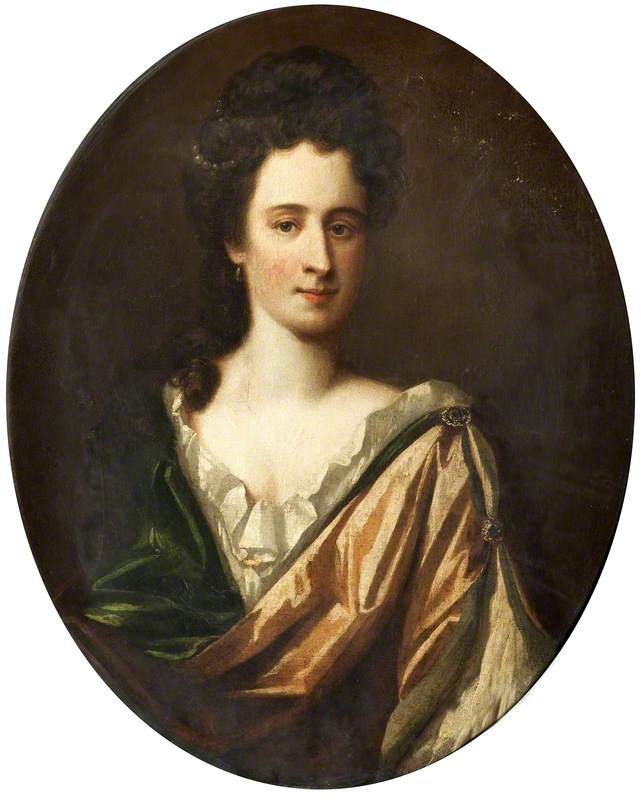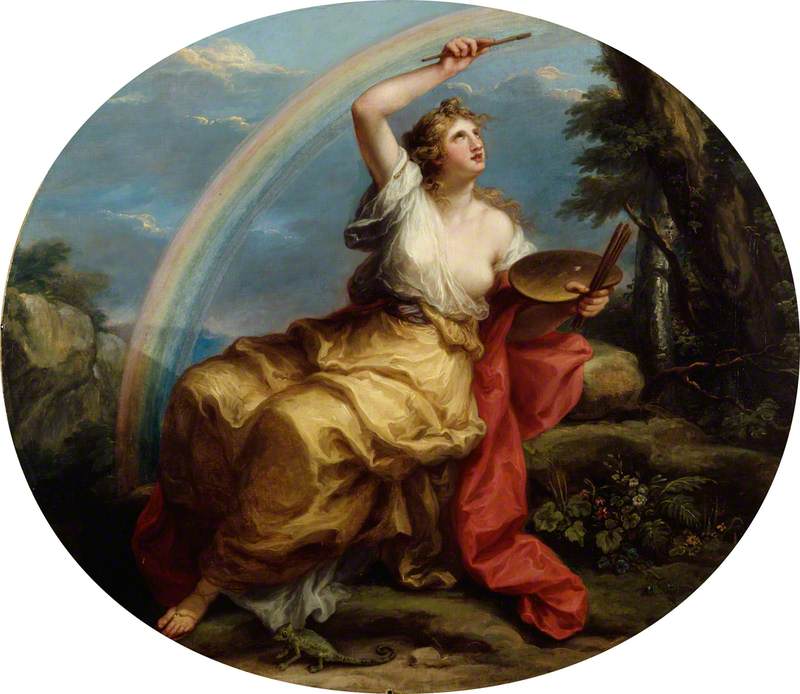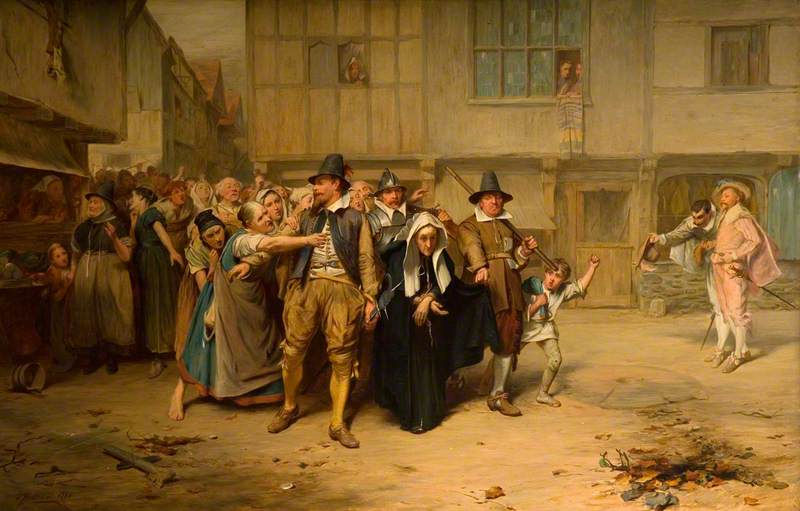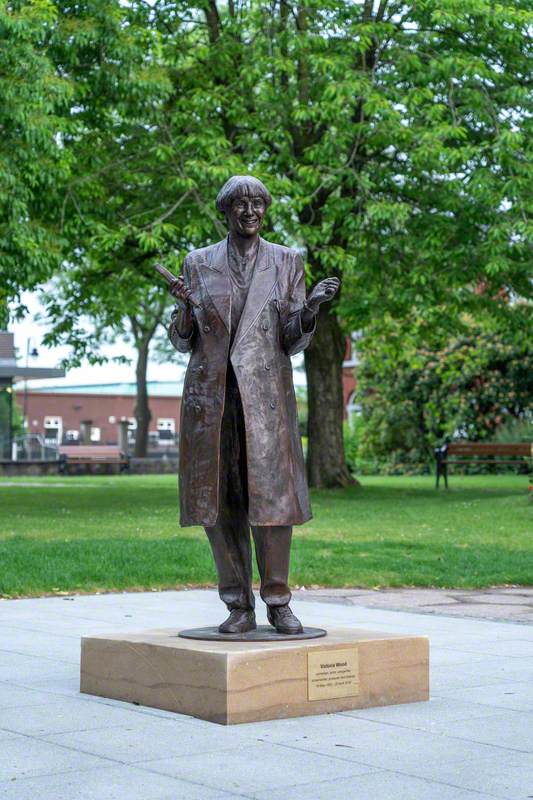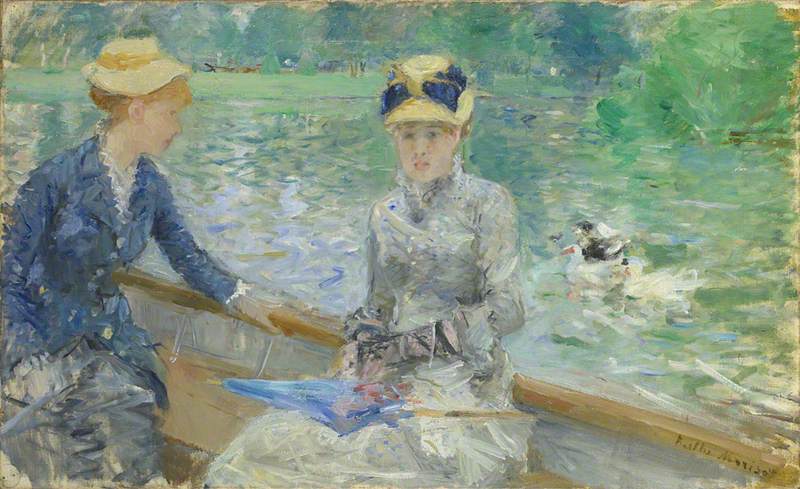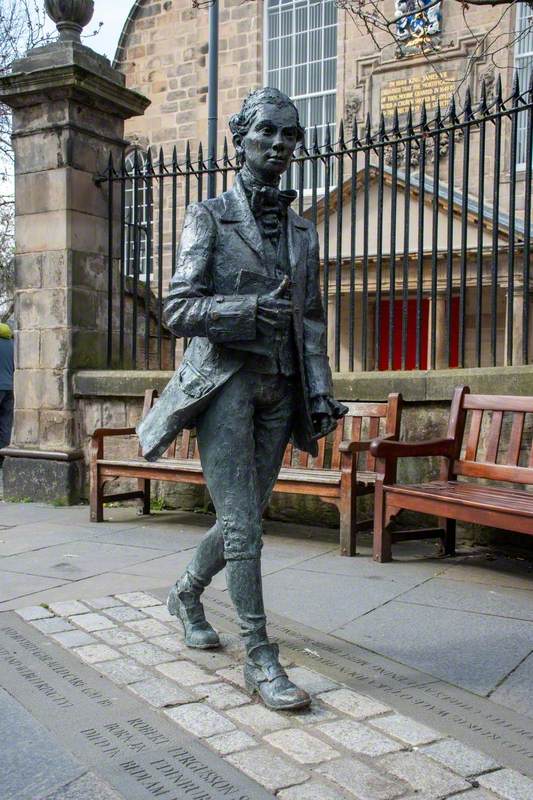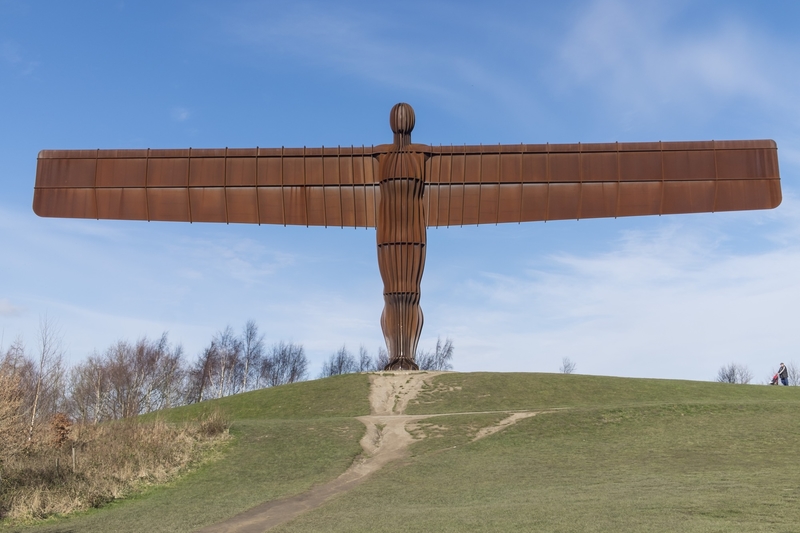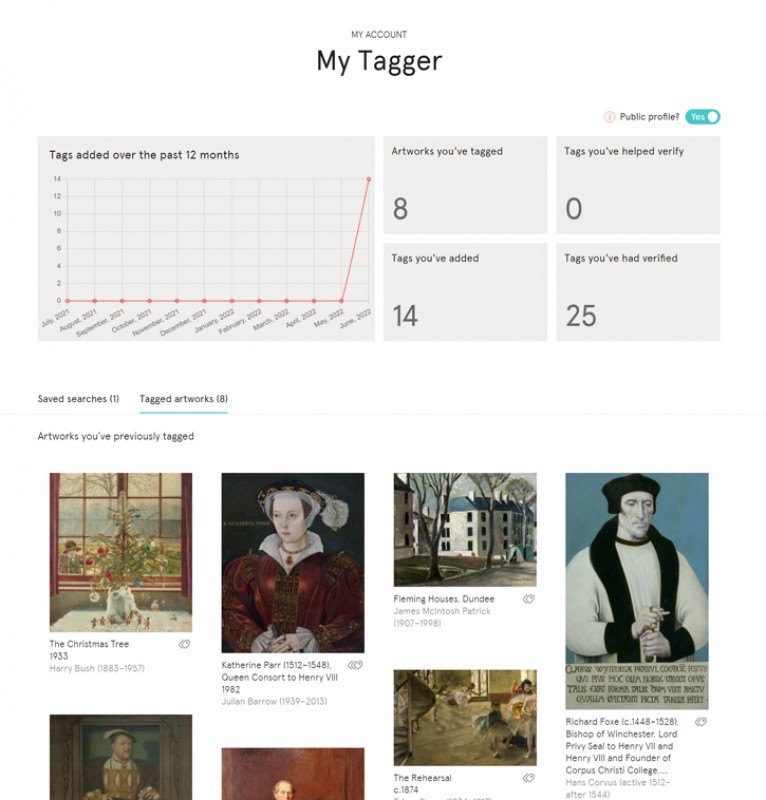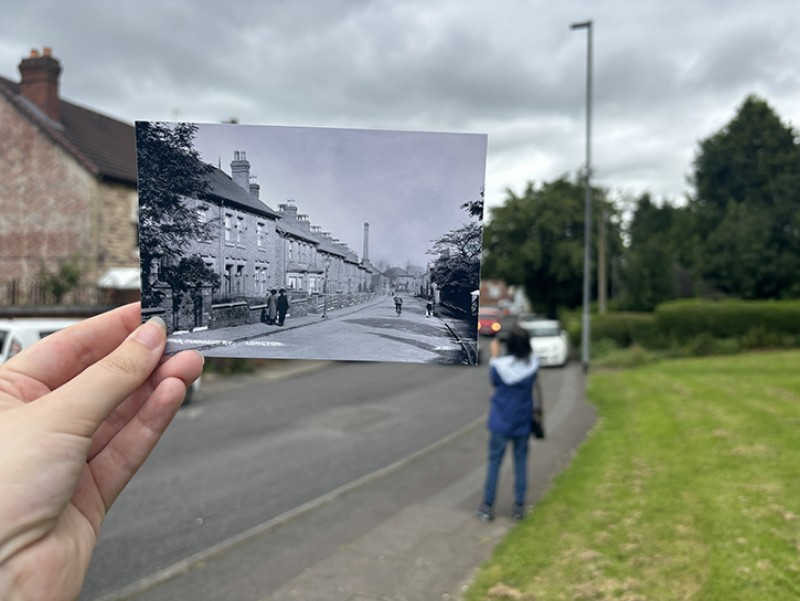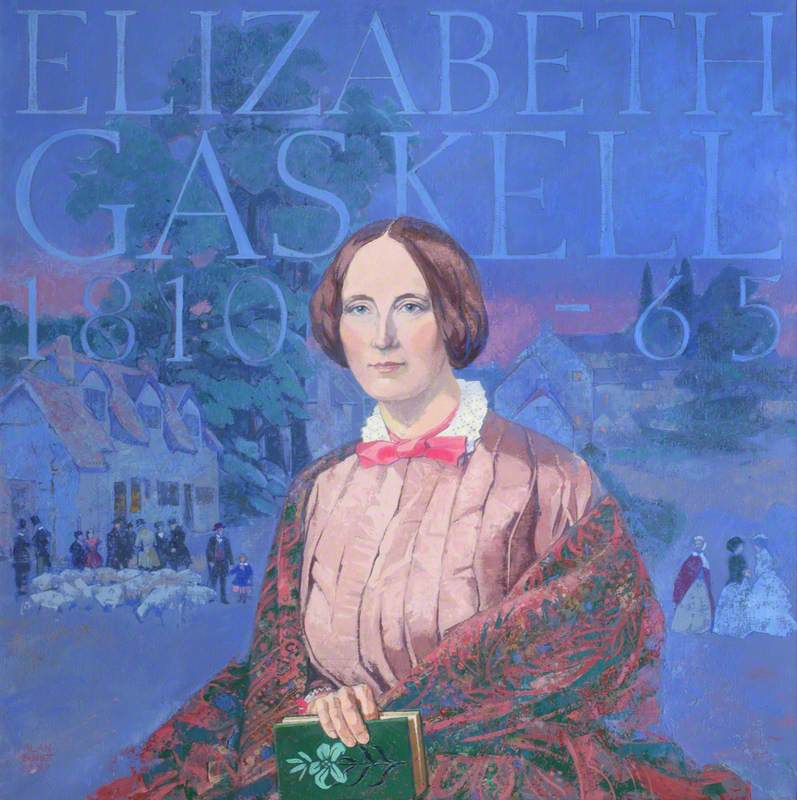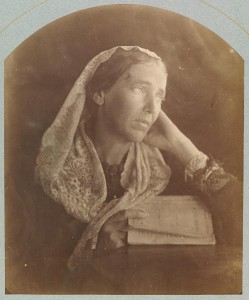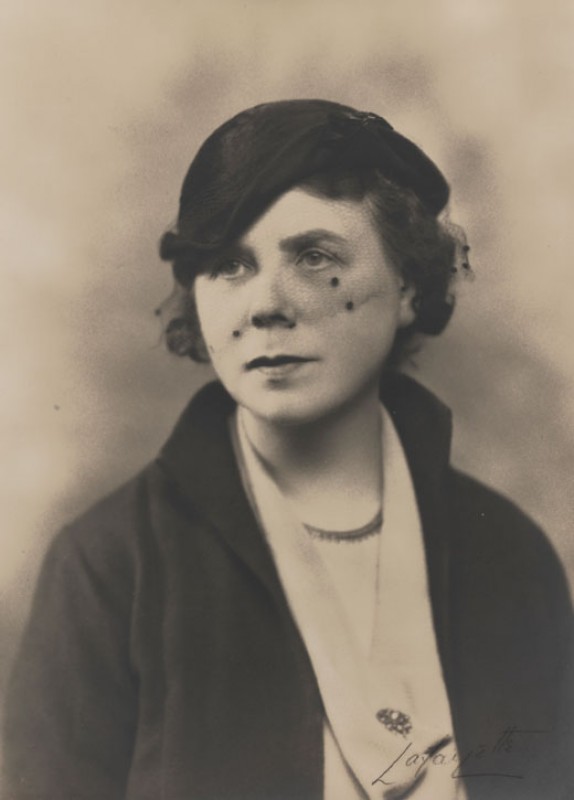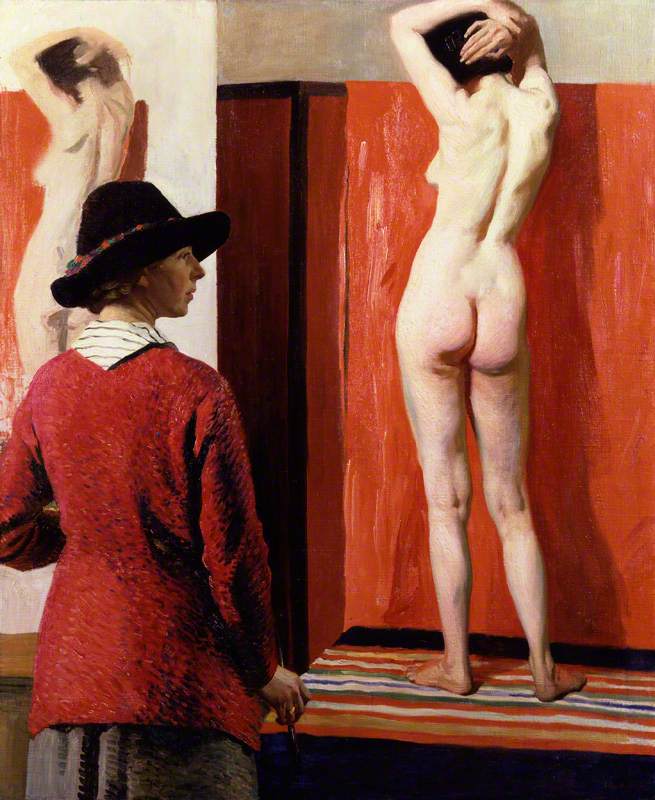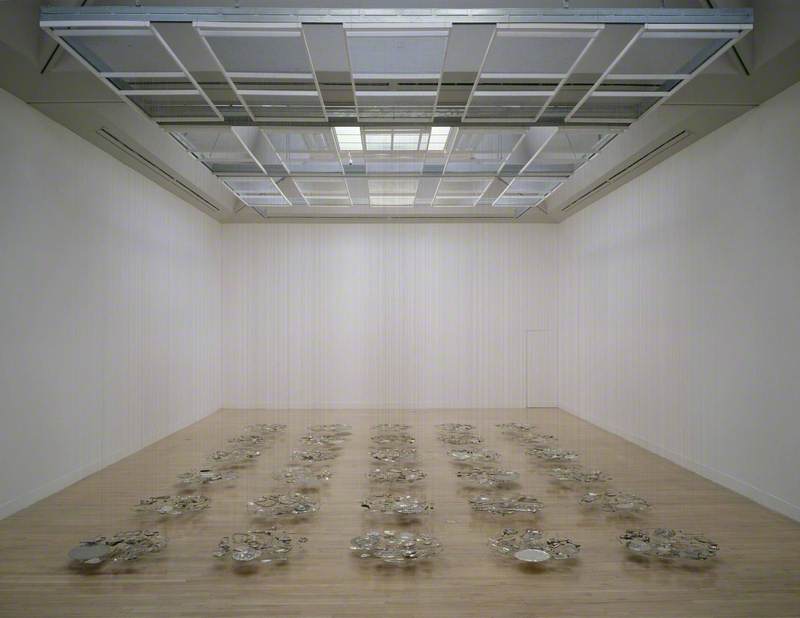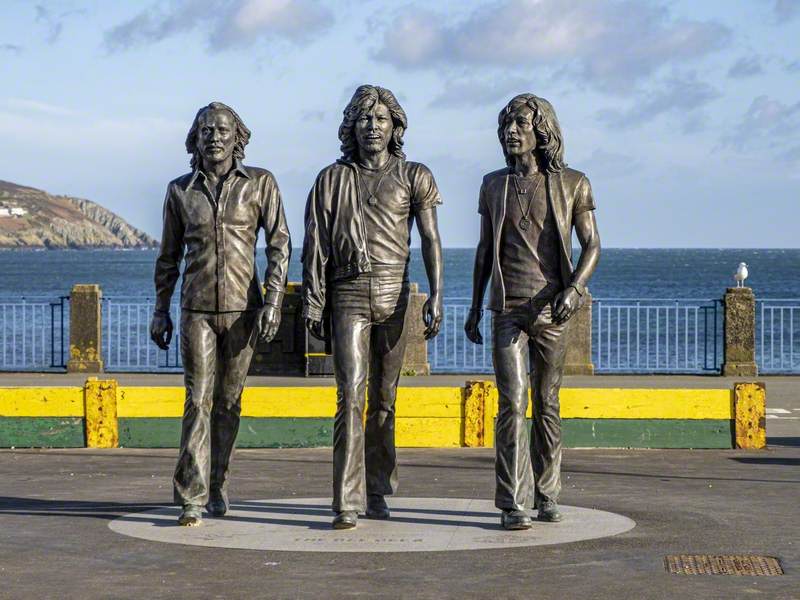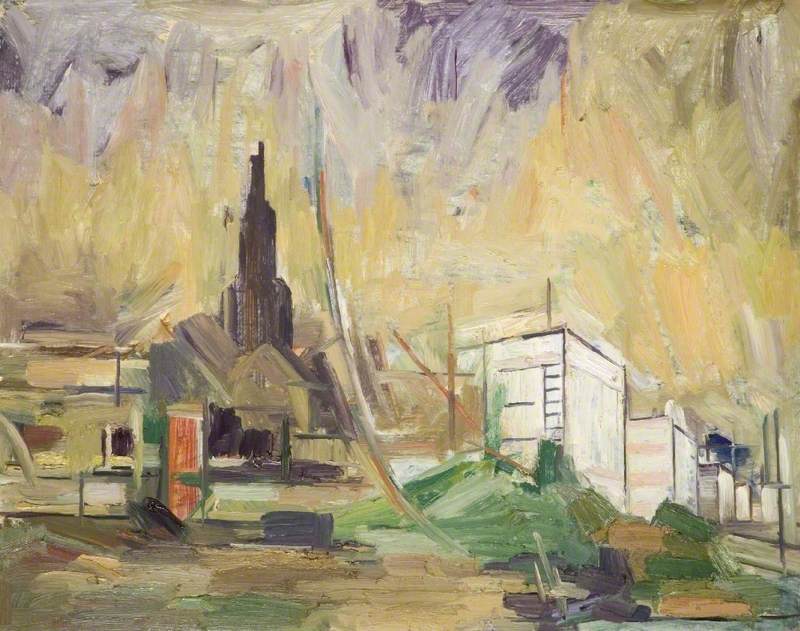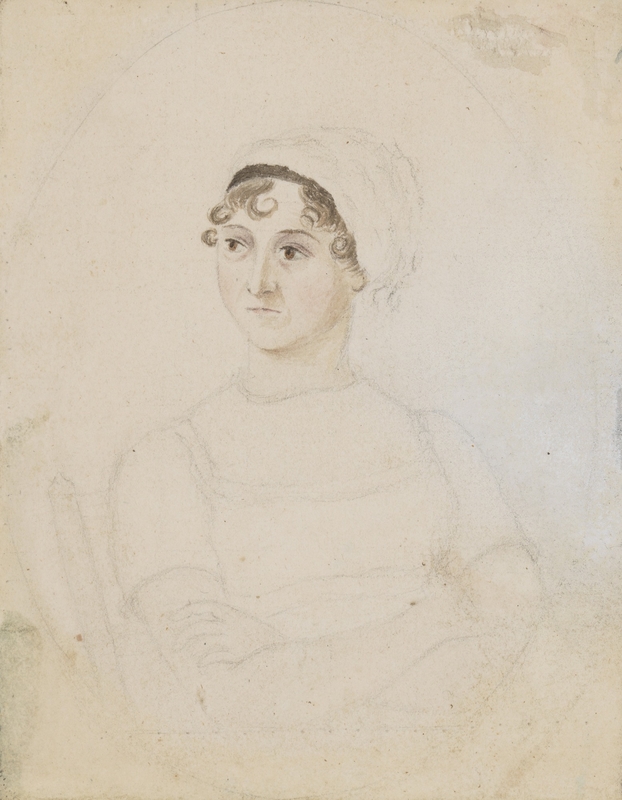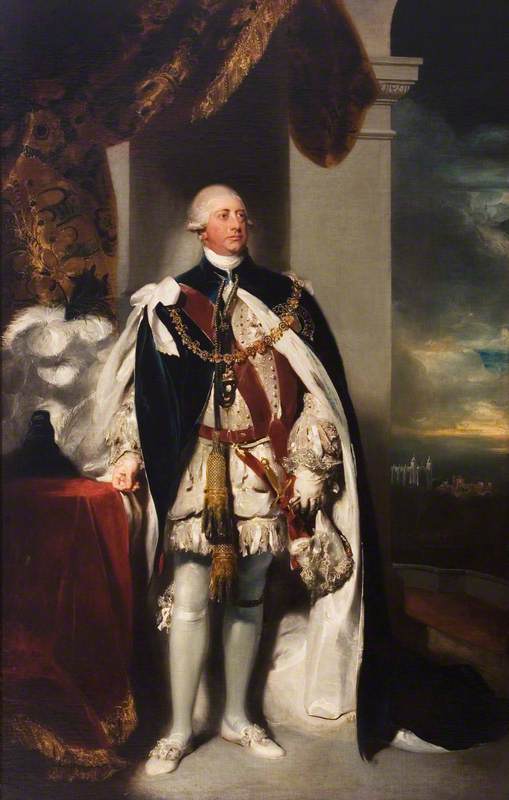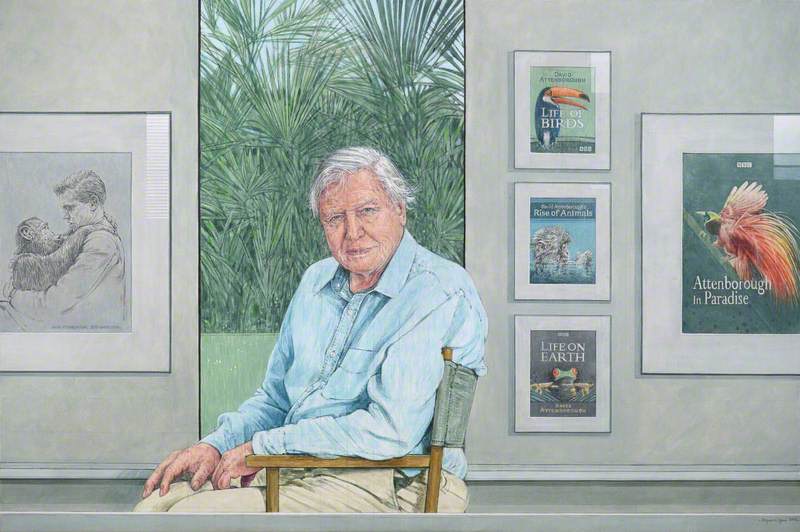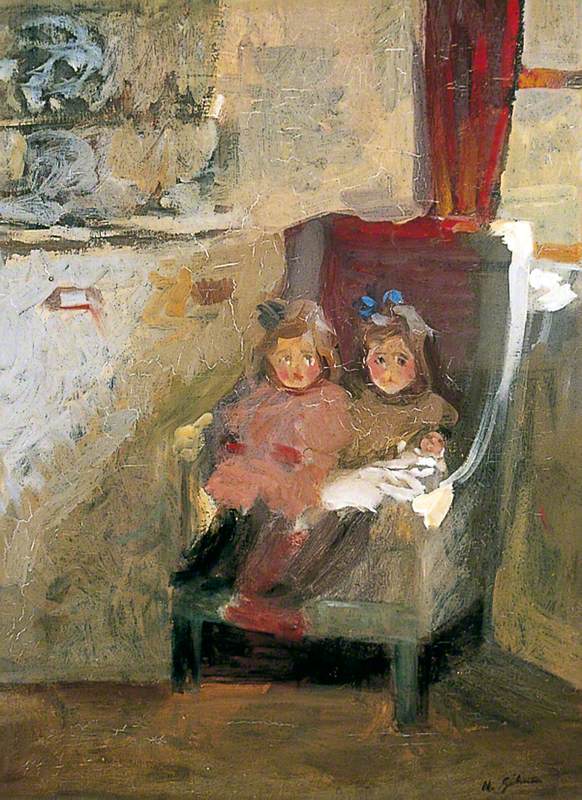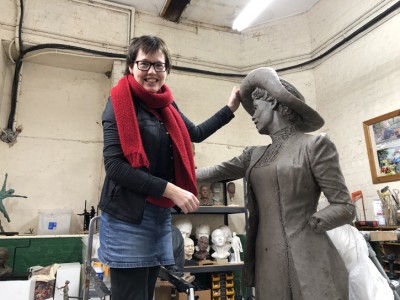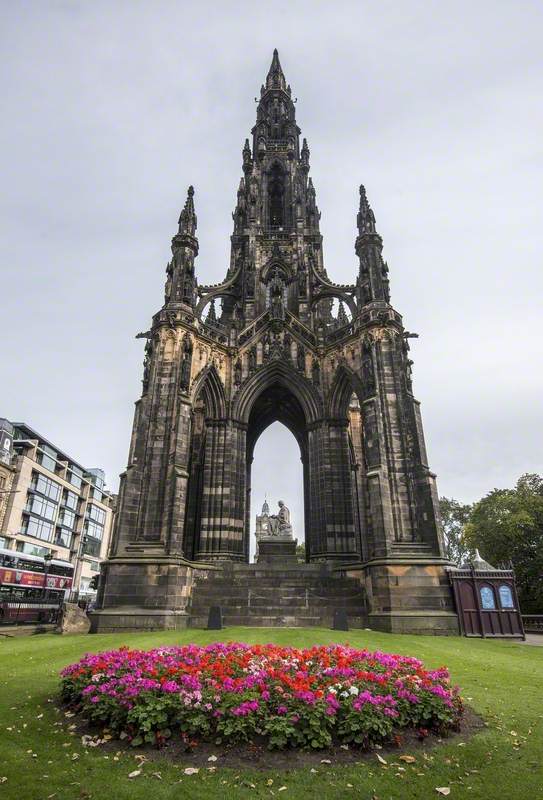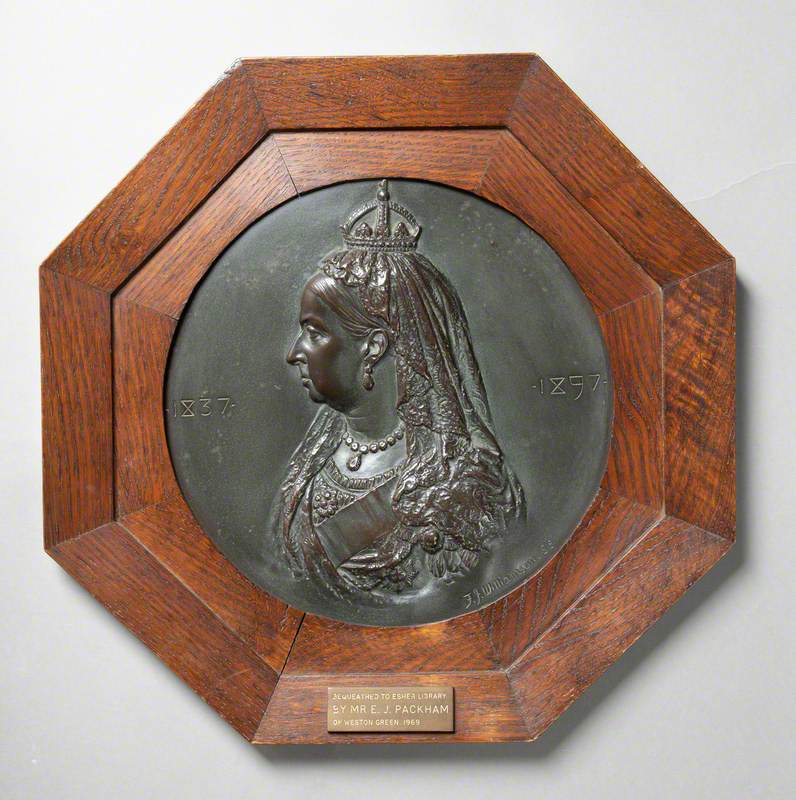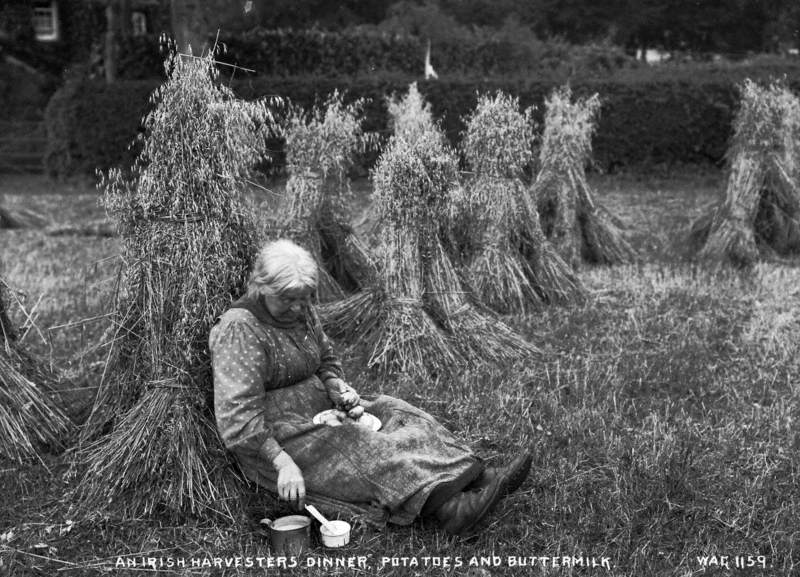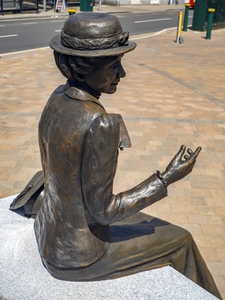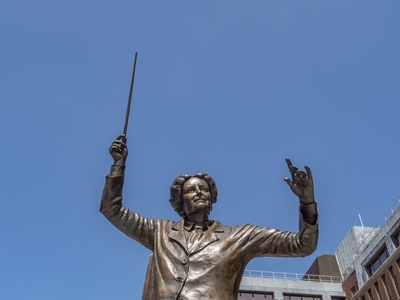The crowd has dispersed, the royal party moved on and a new statue stands unveiled in the centre of Canterbury to commemorate yet another deserving female figure that somehow had not been honoured before.
Aphra Behn was a seventeenth-century poet, playwright, novelist, and spy, whose risqué works later displeased the Victorians and led to her being quietly airbrushed out of history.
Passers-by might well have their interest piqued, or their knowledge increased by seeing a very lifelike Aphra standing there, but how many of them wonder how she came to be there? They might well be aware of the local fund-raising and action group who commissioned her, the public competition that selected this version of Aphra from a shortlist of four models and seen the final choice of sculptor, Christine Charlesworth, announced.
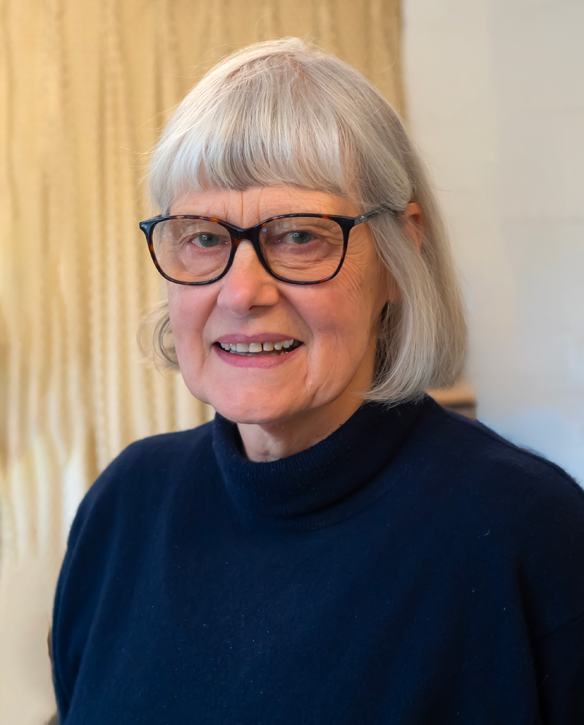
Image credit: Mike Longhurst
Sculptor Christine Charlesworth
But like me, their knowledge of the actual creation process might go no further than that the sculptor makes a big clay version, which is somehow used to create a mould, which somehow has molten bronze poured into it and is eventually delivered for unveiling, to stand for the next millennium or so.
Well, not quite, as I was to find out. Through my work shooting over a thousand sculptures and pieces of art on public display for Art UK, I have got to know some of the living artists and Christine happens to be one of them, so when she told me she had won the Aphra Behn commission, I thought it would be an ideal opportunity to follow the actual process at first hand.
It soon became clear that to document every stage, I would need to live in a tent in Christine's sculpture-filled garden, so we agreed that she would take her own shots of intermediate stages and I would come in for the main steps, that would end up taking well over a year. Both Christine and the A Is For Aphra group in Canterbury would have the shots for their own social media updates, lectures etc.
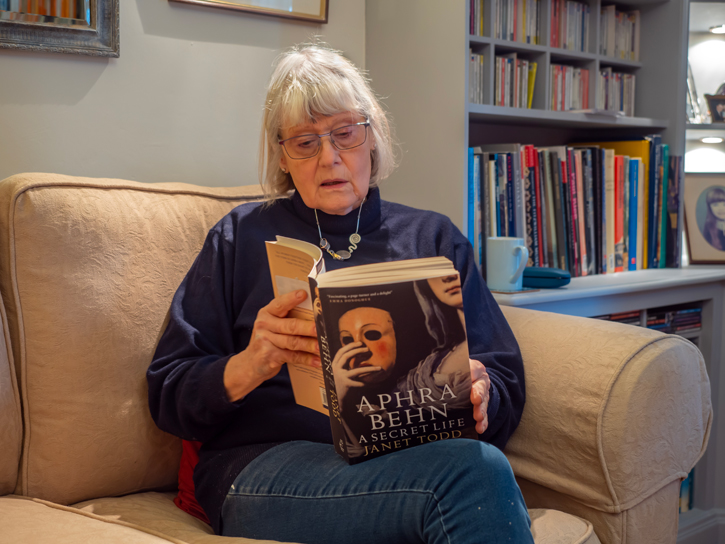
Image credit: Mike Longhurst
Detailed study of the subject
Sculptor Christine Charlesworth reads a book about Aphra Behn
At our first session, we first re-staged for the camera the steps that had led to Christine winning the commission: the study she had done to understand Aphra and to be able to create a vision of how she would portray her, plus the rough sketch that was her entry alongside dozens of other proposals.
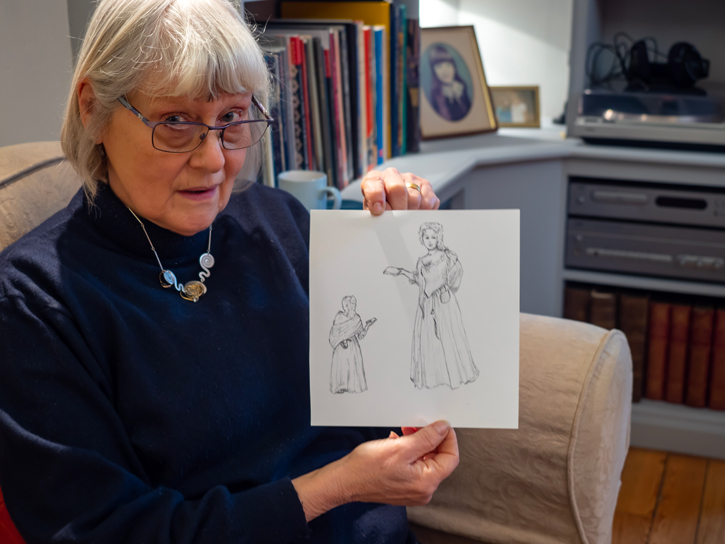
Image credit: Mike Longhurst
The first proposal
Sculptor Christine Charlesworth with a sketch of Aphra Behn
Christine had proposed a very lifelike sculpture, which people could relate to, similar in style to her suffragette Emily Wilding Davison for the centre of Epsom, the young climate change activist Greta Thunberg for Winchester University and the one-and-a-quarter life-size figure of the composer and writer Dame Ethel Smyth which stands enthusiastically conducting at Dukes Court, Woking.
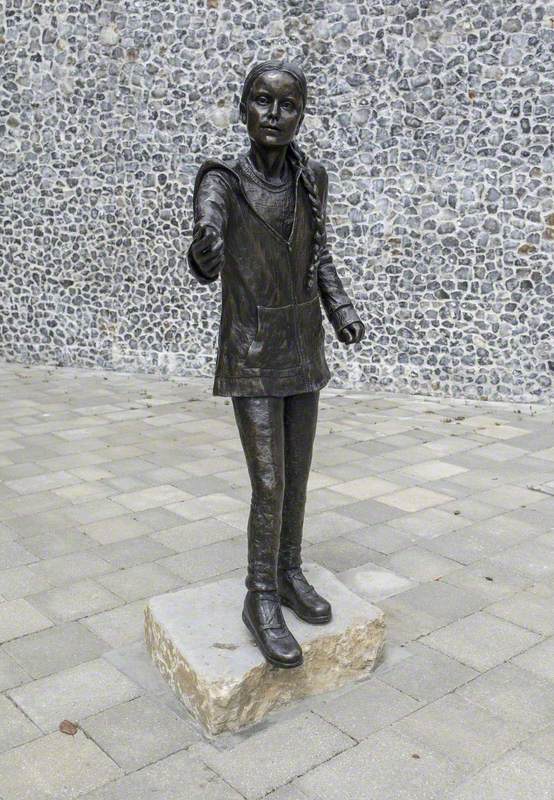
© the artist. Image credit: Pat Goodall / Art UK
Make a Difference (Greta Thunberg, b.2003) 2019–2021
Christine Charlesworth (b.1949)
Romsey Road, Winchester, Hampshire
In Epsom I had seen women sit down and talk to Emily and hold her hand. 'There is absolutely no point in a sculpture figure being simply a shape in a public place,' said Christine. 'It must intrigue and inform. People should be encouraged to follow links and find out more about a person who they might never have heard of. That should be its main purpose.'
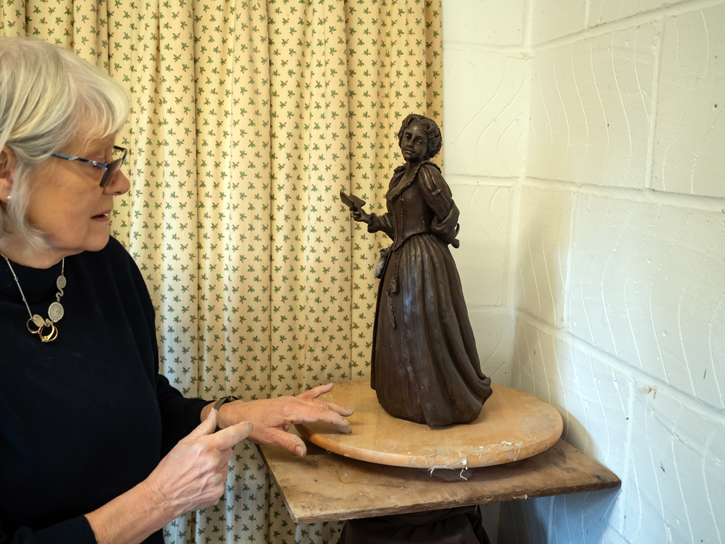
Image credit: Mike Longhurst
The maquette
Sculptor Christine Charlesworth with a maquette of the Aphra Behn sculpture
In her purpose-built studio, conveniently close to her back door, the little 'maquette' that each of the finalists had been required to supply for judgement stood on a revolving plinth in the corner, together with the only reliable picture of Aphra, both referred to constantly as Christine roughly applied clay – 48 buckets of it to be precise – to a wire armature.
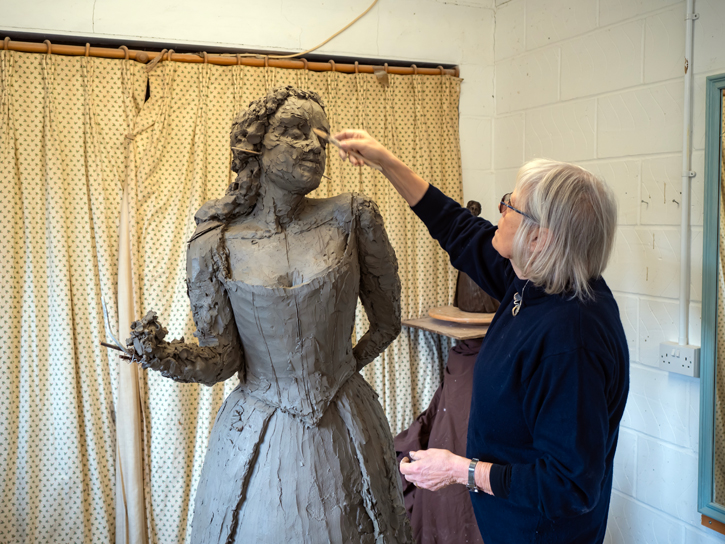
Image credit: Mike Longhurst
Roughly applying clay to the armature
Sculptor Christine Charlesworth and the armature of the Aphra Behn sculpture
Clay that had previously fashioned Emily, Greta and Ethel – it is all recovered. The wires were still visible in what would be a hand as soon as a solution was decided on as to how to fashion the open book that the sculpture was to hold.
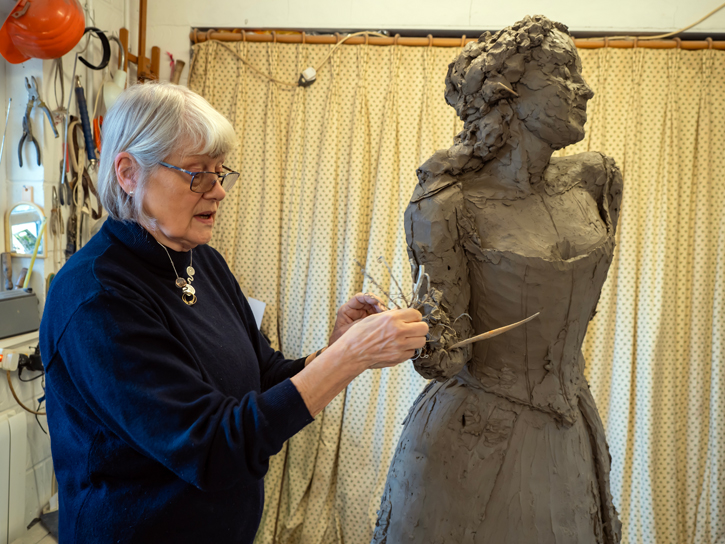
Image credit: Mike Longhurst
Fashioning the hand and book
Sculptor Christine Charlesworth working on the hand and book on the armature of the Aphra Behn sculpture
To keep it workable, the clay was sprayed with water and covered every night.
The tricky decision of how to fashion a book was solved, Christine hoped, by using a real notebook, soaked in hardener – something she had never tried before – and rather than try to fashion each piece of jewellery and other details, real beads were embedded and strips of lace pressed onto the clay to give the patterning on her dress.
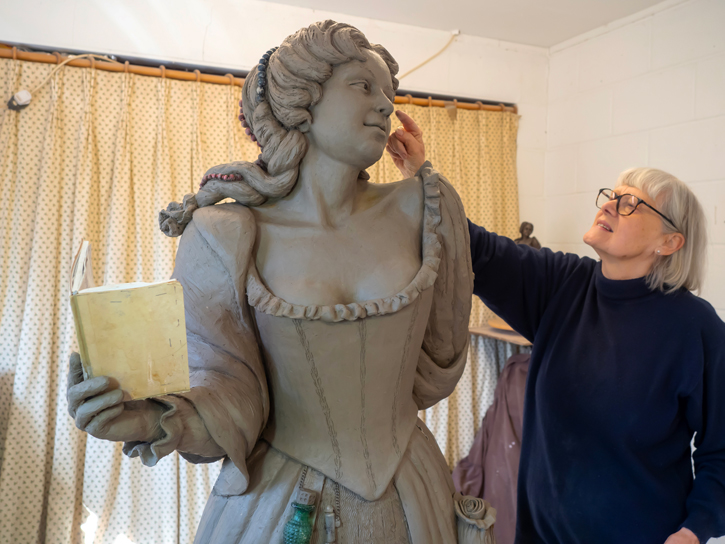
Image credit: Mike Longhurst
A real book soaked in hardener
Sculptor Christine Charlesworth with the armature of Aphra Behn and a real book
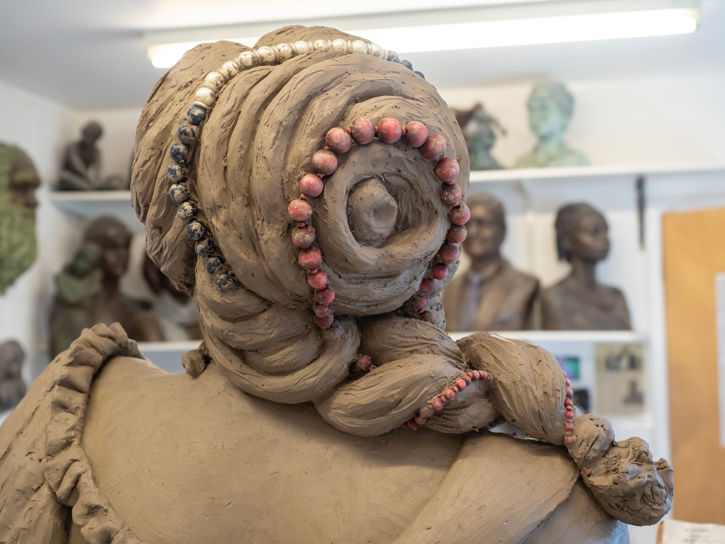
Image credit: Mike Longhurst
Real beads form the decoration
Close-up view of the beads on the armature of the Aphra Behn sculpture
With the clay seen and approved by the Canterbury group, it was time to start the moulding process. Christine started at the top, pouring latex and blowing it into all the little crevices.
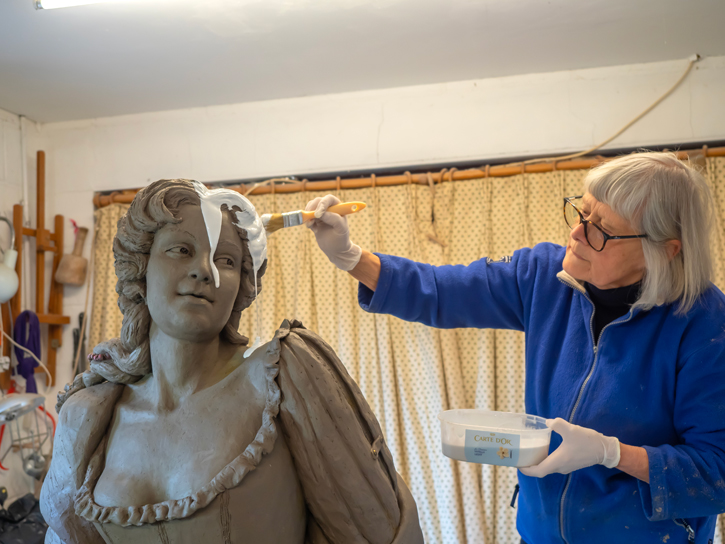
Image credit: Mike Longhurst
Applying latex
Sculptor Christine Charlesworth applying latex to the armature of the Aphra Behn sculpture
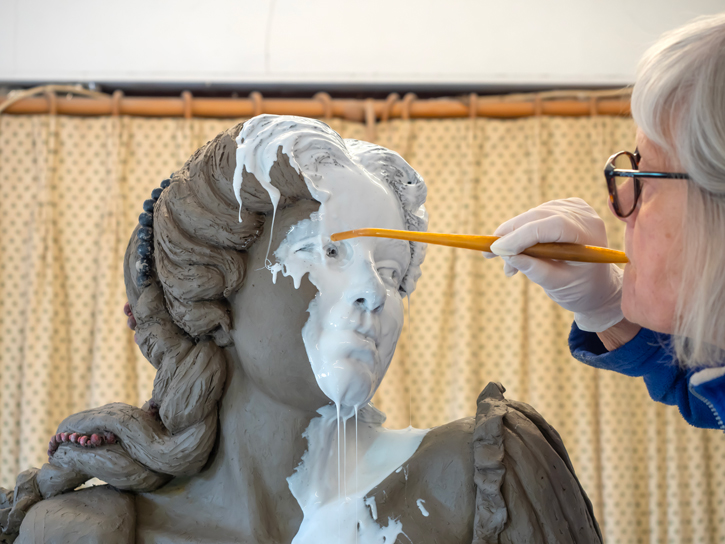
Image credit: Mike Longhurst
Filling the crevices
Sculptor Christine Charlesworth filling in the crevices on the armature of the Aphra Behn sculpture
Within a week, she was covered in 35kg of rubber, with flanges for separation kept apart with old photos.
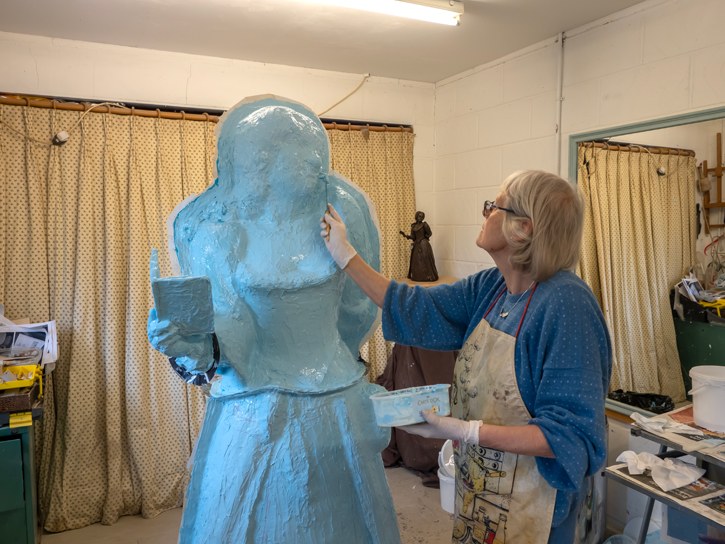
Image credit: Mike Longhurst
The armature covered in 35kg of rubber
Sculptor Christine Charlesworth covering the Aphra Behn armature with rubber
Nearly three weeks later, a hard resin and fibreglass shell had been built up over the completed rubber mould and when I arrived at the studio, Christine was hard at work drilling holes in the flanges, which would be used to bolt the mould back together again after removal from the clay. The hard shell is needed to keep the very soft rubber mould in place and stop it from distorting.
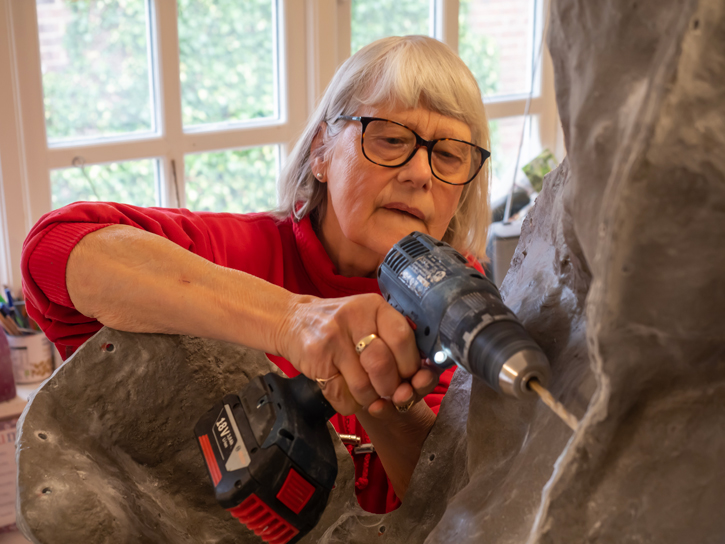
Image credit: Mike Longhurst
Drilling the flanges
Sculptor Christine Charlesworth driling flanges into the armature of the Aphra Behn sculpture
With holes drilled, it was time to remove the resin jacket, then separate the rubber mould. The rubber parts would be laid back into the resin sections and clipped together all around the seams using studs before transporting to the foundry. Christine playfully said: 'I suppose you think they are going to fill this with metal? Everyone does!'
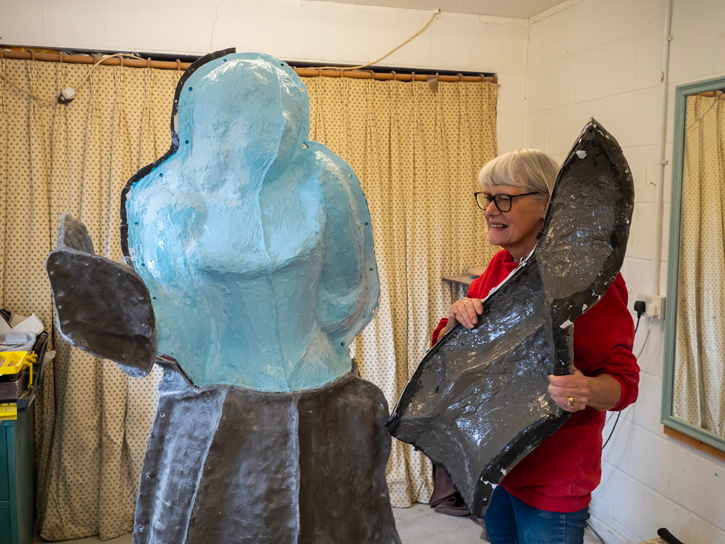
Image credit: Mike Longhurst
Separating the resin jacket
Sculptor Christine Charlesworth separating the resin jacket on the Aphra Behn sculpture
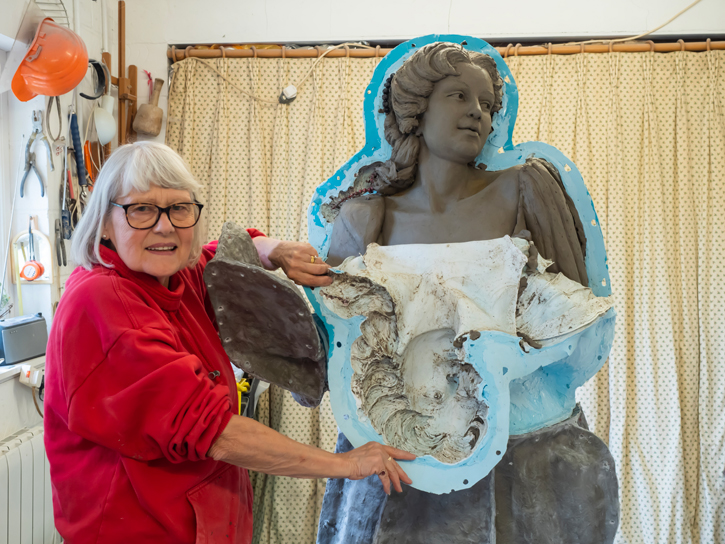
Image credit: Mike Longhurst
Peeling back the rubber mould
Sculptor Christine Charlesworth peels back the rubber mould from the Aphra Behn sculpture
In fact, the foundry filled the mould with wax and then covered that section by section with a ceramic layer which was to be the heat-resistant mould for molten bronze. They added dozens of channels for air to escape and then heat melted out the wax (the lost wax process) to leave a hollow shell. So, all was finally ready for casting piece by piece.
Embedded in sand, each section was filled with metal and set aside to cool, before all the channels and extraneous bits were sawn, filed, or hacked off.
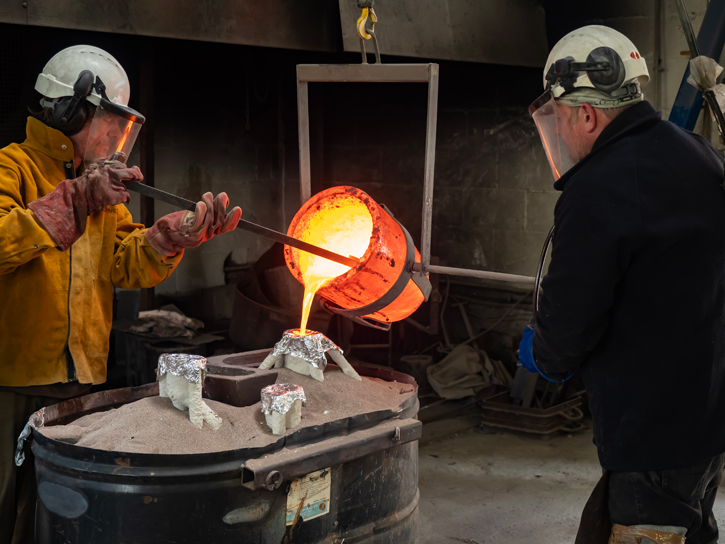
Image credit: Mike Longhurst
Sections of the ceramic mould are filled with bronze
Foundry workers fill the mould of the Aphra Behn sculpture with bronze
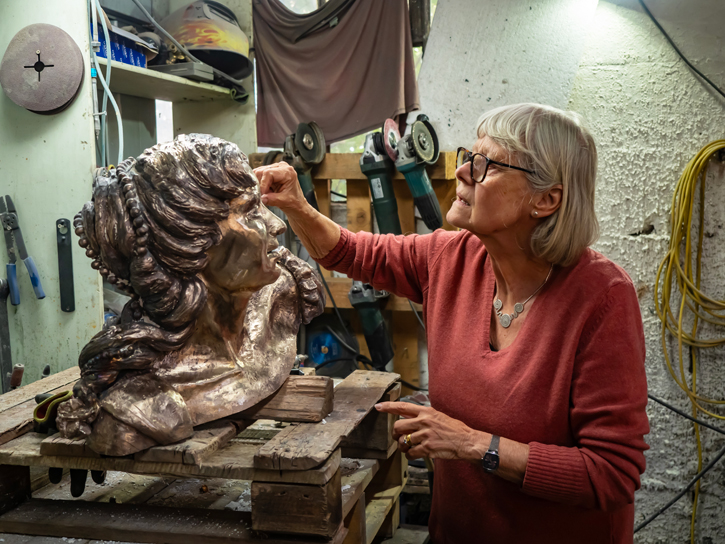
Image credit: Mike Longhurst
Meticulous inspection of the cast pieces
Sculptor Christine Charlesworth inspects the cast bronze pieces of the Aphra Behn sculpture
With all the parts, large and small, liberated from the ceramic mould and extraneous lengths of bronze, work began to reassemble Aphra and weld her together, the technician's skill successfully hiding welds that looked like very bad surgery scars.
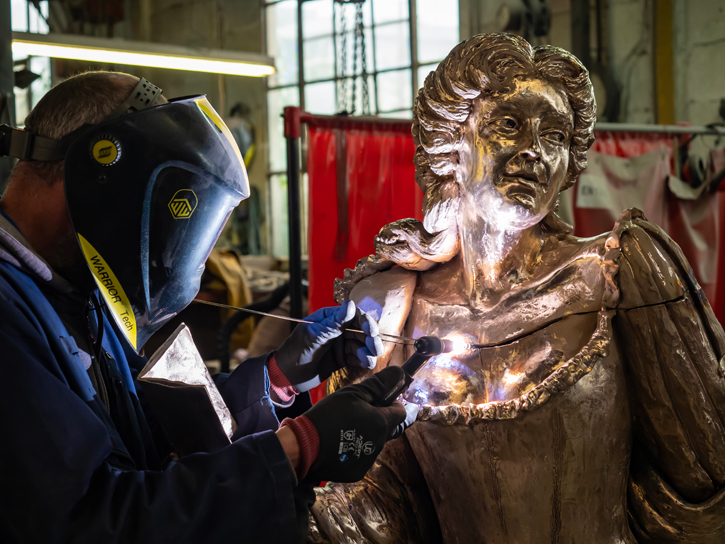
Image credit: Mike Longhurst
The sections are welded together and the welds hidden
A welder joins the cast pieces of the Aphra Behn sculpture together, hiding the joins
At this crucial phase, the artist has to supervise and approve everything, before it goes to sand-blasting and then again afterwards, when every tiny glitch is marked with a felt pen.
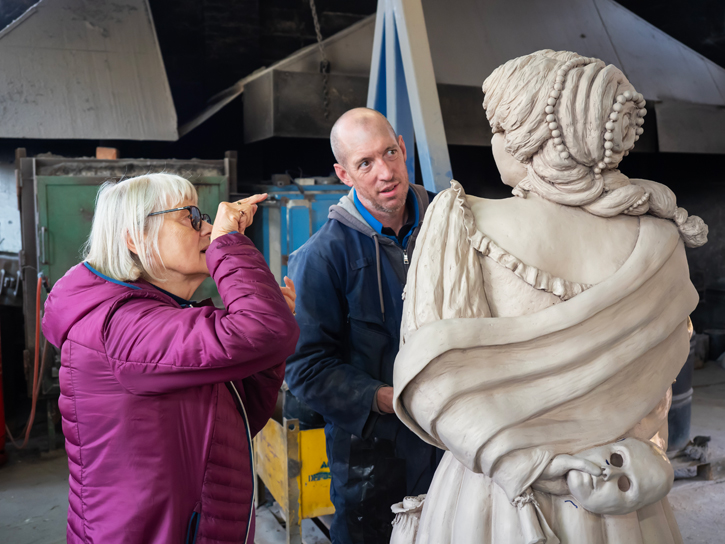
Image credit: Mike Longhurst
Every little glitch is marked
Sculptor Christine Charlesworth inspects every detail of the cast sculpture of Aphra Behn
With the sculpture looking once again like the clay that formed it, it is time for colouring and the final patina to be applied. With the client present and in natural daylight, a blowtorch applies the patina, first making the surface look liquid, before cooling to its final appearance, with every tiny detail inspected by the client and the artist's critical eye.
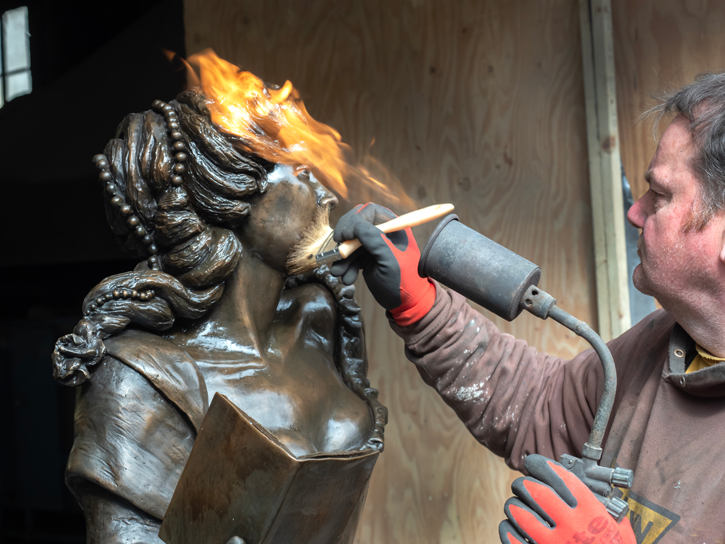
Image credit: Mike Longhurst
The surface looks liquid during patinating
The Aphra Behn sculpture is patinated to achieve the desired colour
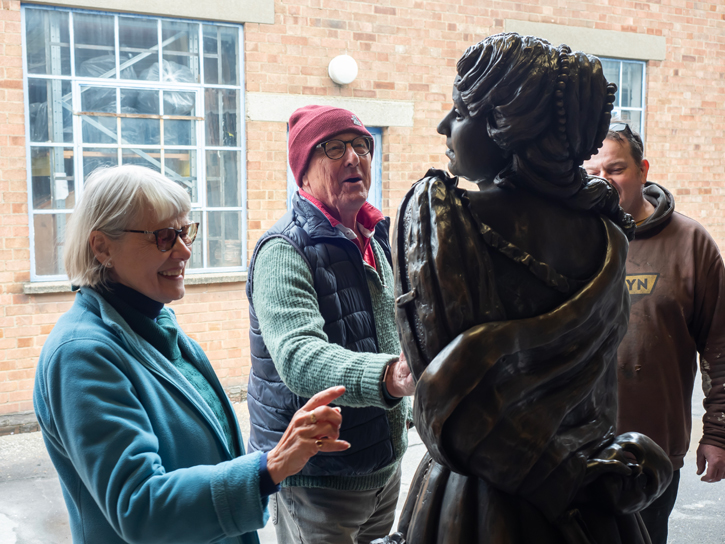
Image credit: Mike Longhurst
The final client inspection
Sculptor Christine Charlesworth inspects the finished sculpture of Aphra Behn
And so, to the moment the sculpture is revealed by Her Majesty Queen Camilla to the townspeople who will live with it and pass it by every day.
View this post on Instagram
A critical moment full of tension for all concerned with the creation, not least Christine Charlesworth herself, who by now has a very motherly feeling towards it.
It is never just a project to be completed and delivered, but something that remains a part of its creator forever.
Mike Longhurst, Art UK volunteer photographer
